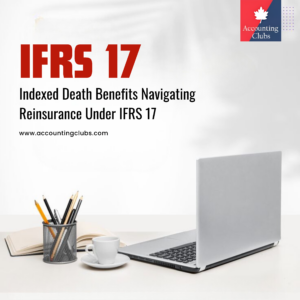How Accounting From pension plans and benefits are accounted under standard IAS19 and events that causes actuarial gains and losses

IAS 19, “Employee Benefits,” provides a comprehensive framework for the accounting and disclosure of employee benefits, particularly focusing on pension plans and other post-employment benefits. This article delves into the accounting treatment of defined benefit plans, the recognition of actuarial gains and losses, and the events that can lead to these gains and losses.
Accounting Treatment of Defined Benefit Plans
Defined benefit plans are retirement plans where the employer commits to providing specific retirement benefits to employees based on factors such as years of service and salary history. The accounting for these plans under IAS 19 involves several key steps:
- Determining the Defined Benefit Obligation (DBO):
The first step is to calculate the present value of the defined benefit obligation, which represents the employer’s future payment obligations to employees. This is typically done using the projected unit credit method, which considers the employees’ current and past service, along with actuarial assumptions regarding future salary increases, mortality rates, and employee turnover. - Fair Value of Plan Assets:
The fair value of any plan assets held to fund the defined benefit obligations is determined. This includes investments such as stocks, bonds, and other financial instruments. - Net Defined Benefit Liability (Asset):
The net defined benefit liability (or asset) is calculated as the difference between the present value of the defined benefit obligation and the fair value of plan assets. If the obligation exceeds the assets, a liability is recognized; if the assets exceed the obligation, an asset is recognized. - Recognition of Expense:
The cost of providing defined benefits is recognized in profit or loss as an expense. This includes:
- Current Service Cost: The increase in the DBO resulting from employee service in the current period.
- Net Interest Cost: This represents the increase in the DBO due to the passage of time, calculated using the discount rate applied to the DBO at the beginning of the period.
- Remeasurements: Actuarial gains and losses are recognized in other comprehensive income (OCI) and not in profit or loss.

Actuarial Gains and Losses
Actuarial gains and losses arise from changes in actuarial assumptions or from differences between expected and actual outcomes. These can significantly impact the financial statements and are treated as follows:
- Sources of Actuarial Gains and Losses:
- Changes in Assumptions: Adjustments to assumptions regarding discount rates, salary growth rates, or mortality rates can lead to actuarial gains or losses. For example, if the discount rate increases, the present value of the DBO decreases, resulting in a gain.
- Experience Adjustments: Differences between the expected outcomes (based on assumptions) and actual outcomes can also result in gains or losses. For instance, if fewer employees retire than expected, this could lead to a reduction in the DBO, creating a gain.
- Changes in Assumptions: Adjustments to assumptions regarding discount rates, salary growth rates, or mortality rates can lead to actuarial gains or losses. For example, if the discount rate increases, the present value of the DBO decreases, resulting in a gain.
- Recognition in Financial Statements:
- Actuarial gains and losses are recognized immediately in OCI, which helps to smooth out the impact on profit or loss over time. This treatment enhances transparency and reflects the long-term nature of pension obligations.
- The cumulative amount of actuarial gains and losses recognized in OCI is not recycled to profit or loss in subsequent periods.
- Actuarial gains and losses are recognized immediately in OCI, which helps to smooth out the impact on profit or loss over time. This treatment enhances transparency and reflects the long-term nature of pension obligations.
How do actuarial assumptions impact the calculation of actuarial gains and losses
Actuarial assumptions play a vital role in the calculation of actuarial gains and losses, particularly in the context of defined benefit pension plans. These assumptions influence the present value of the defined benefit obligation (DBO) and can lead to significant financial implications for organizations. Below, we explore how changes in these assumptions can impact the calculation of actuarial gains and losses, supported by practical numerical examples.
Understanding Actuarial Assumptions
Actuarial assumptions can be categorized into two main types:
- Financial Assumptions: These include the discount rate, expected salary increases, and expected return on plan assets. For example, the discount rate is crucial as it determines the present value of future benefit payments.
- Demographic Assumptions: These encompass factors such as employee turnover rates, mortality rates, and retirement ages. Changes in these assumptions can affect the timing and amount of benefit payments.

Impact of Changes in Actuarial Assumptions
When assumptions change, they can lead to either actuarial gains or losses. Here’s how:
- Actuarial Gain: Occurs when the actual experience is better than expected based on the assumptions. For instance, if the actual salary increase is lower than the assumed increase, this results in a gain.
- Actuarial Loss: Occurs when the actual experience is worse than expected. For example, if the discount rate used decreases, the present value of the DBO increases, leading to a loss.
Numerical Example
Scenario: A company has a defined benefit plan with the following assumptions:
- Initial Discount Rate: 5%
- Salary Growth Rate: 3%
- Projected Benefits: $1,000,000 in 10 years
Step 1: Calculate Present Value of DBO
Using the initial assumptions, the present value (PV) of the DBO can be calculated as follows:
PV=\frac{Future\Benefits}{(1+r)^n}
Where:
- r = discount rate (5% or 0.05)
- n = number of years until payment (10)
PV=\frac{1,000,000}{(1+0.05)^{10}}=\frac{1,000,000}{1.62889}\approx 613,913
Step 2: Change in Assumptions
Now, suppose the company reassesses its assumptions and decides to change the discount rate to 4% and the salary growth rate to 4%.
Step 3: Recalculate Present Value of DBO
Using the new assumptions:
PV=\frac{1,000,000}{(1+0.04)^{10}}=\frac{1,000,000}{1.48024}\approx 675,564
Step 4: Calculate Actuarial Gain/Loss
The actuarial loss due to the change in assumptions can be calculated as follows:
Actuarial\Loss=New\PV-Old\PV
Actuarial\Loss=675,564-613,913=61,651
Analysis of Results In this example, the change in the discount rate from 5% to 4% resulted in an actuarial loss of $61,651. This loss reflects the increased present value of future obligations due to lower discounting, which is a direct consequence of the revised financial assumption.Conversely, if the actual salary increases had been lower than assumed, or if mortality rates had improved (leading to fewer payouts), these factors could contribute to actuarial gains.
How does IAS 19 treat post-employment benefits differently from other long-term benefits
IAS 19, “Employee Benefits,” distinguishes between post-employment benefits and other long-term benefits, reflecting the different nature and timing of these obligations. This differentiation impacts the accounting treatment, recognition, measurement, and disclosure requirements for each category.
Treatment of Post-Employment Benefits
Post-employment benefits primarily include retirement benefits such as pensions, post-employment medical care, and life insurance. Under IAS 19, these benefits are typically classified into two main types:

- Defined Contribution Plans: In these plans, the employer’s obligation is limited to the contributions made to the plan. The accounting treatment is straightforward; the employer recognizes contributions as an expense in the period they are due. There are no further obligations beyond the contributions, and thus, actuarial assumptions are not necessary.
- Defined Benefit Plans: These plans require a more complex accounting treatment because the employer is responsible for paying a specified amount of benefits to employees upon retirement. The accounting for these plans under IAS 19 involves:
- Recognition of a Liability: Employers must recognize a liability for the present value of the defined benefit obligation (DBO) at the end of the reporting period. This involves estimating future benefit payments based on various actuarial assumptions regarding discount rates, salary growth rates, and mortality rates.
- Actuarial Gains and Losses: Any changes in actuarial assumptions or differences between expected and actual outcomes can lead to actuarial gains or losses. These are recognized in other comprehensive income (OCI) rather than profit or loss, which helps to smooth the impact on the income statement over time.
- Current Service Cost and Interest Cost: The employer must also recognize the current service cost (the increase in the DBO due to employee service in the current period) and the net interest cost (the increase in the DBO due to the passage of time).
- Recognition of a Liability: Employers must recognize a liability for the present value of the defined benefit obligation (DBO) at the end of the reporting period. This involves estimating future benefit payments based on various actuarial assumptions regarding discount rates, salary growth rates, and mortality rates.
Treatment of Other Long-Term Benefits
Other long-term benefits include benefits such as long service leave, sabbatical leave, and deferred compensation. The accounting treatment for these benefits under IAS 19 is less complex than that for post-employment benefits but still requires careful consideration:
- Recognition of a Liability: Similar to post-employment benefits, a liability must be recognized for these benefits when the employee provides service in exchange for the benefits.
- Measurement: The measurement of these liabilities typically does not require the same level of actuarial assumptions as defined benefit plans. Instead, they are often based on the expected future payments and may not require the same detailed actuarial calculations.
Key Differences in Treatment
- Complexity of Measurement: Post-employment benefits, particularly defined benefit plans, require complex actuarial calculations and assumptions, while other long-term benefits often rely on simpler estimates.
- Recognition in Financial Statements: Actuarial gains and losses from defined benefit plans are recognized in OCI, whereas other long-term benefits do not typically involve such gains and losses.
- Timing of Expense Recognition: For post-employment benefits, the expense is recognized over the employee’s service period, reflecting the long-term nature of these obligations. In contrast, other long-term benefits may be recognized based on the timing of when the benefits are expected to be paid.
Example
Scenario: A company offers both a defined benefit pension plan and long service leave.Defined Benefit Plan: The company estimates that it will pay $1,000,000 in benefits in 20 years. Using a discount rate of 5%, the present value of the defined benefit obligation is calculated as follows:

The company recognizes a liability of $376,889 on its balance sheet and accounts for the current service cost and interest cost in its profit and loss statement.
Long Service Leave: The company also provides long service leave benefits that are expected to be paid out in 5 years, with an estimated total cost of $50,000. Since this is not a defined benefit plan, the company recognizes the liability based on the expected payment without complex actuarial assumptions.
What changes were made to the recognition of actuarial gains and losses in the 2011 version of IAS 19
The 2011 revision of IAS 19 introduced significant changes regarding the recognition of actuarial gains and losses, fundamentally altering how these items are treated in financial statements. Below are the key changes made in the 2011 version compared to previous iterations of the standard.
Key Changes in Recognition of Actuarial Gains and Losses
- Elimination of the Corridor Approach:
- Previous Versions: Under earlier versions of IAS 19, entities could use the “corridor approach” to recognize actuarial gains and losses. This method allowed for the deferral of recognition of gains and losses that fell within a specified range (the corridor), while only those exceeding this corridor were recognized immediately.
- 2011 Amendment: The revised standard eliminated the corridor approach entirely. As a result, all actuarial gains and losses must now be recognized immediately in other comprehensive income (OCI) in the period in which they occur, enhancing transparency and comparability across entities.
- Previous Versions: Under earlier versions of IAS 19, entities could use the “corridor approach” to recognize actuarial gains and losses. This method allowed for the deferral of recognition of gains and losses that fell within a specified range (the corridor), while only those exceeding this corridor were recognized immediately.
- Immediate Recognition in Other Comprehensive Income:
- Previous Versions: Actuarial gains and losses could be recognized in profit or loss or deferred under the corridor approach.
- 2011 Amendment: The revised IAS 19 mandates that all actuarial gains and losses be recognized immediately in OCI. This change ensures that the effects of changes in actuarial assumptions and experience adjustments are reflected in the financial statements without delay.
- Previous Versions: Actuarial gains and losses could be recognized in profit or loss or deferred under the corridor approach.
- Disaggregation of Defined Benefit Costs:
- Previous Versions: There was less clarity regarding the components of defined benefit costs and how they should be presented.
- 2011 Amendment: The revised standard requires entities to disaggregate defined benefit costs into three components:
- Current service cost (recognized in profit or loss)
- Net interest on the net defined benefit liability (asset) (recognized in profit or loss)
- Remeasurements (including actuarial gains and losses) (recognized in OCI)
- Previous Versions: There was less clarity regarding the components of defined benefit costs and how they should be presented.
- Enhanced Disclosure Requirements:
- Previous Versions: Disclosure requirements were less comprehensive, leading to inconsistencies in reporting.
- 2011 Amendment: The revised standard introduced more detailed disclosure requirements regarding the nature of the defined benefit plans, the risks associated with them, and the assumptions used in measuring the defined benefit obligations. This change aims to improve the quality of information available to users of financial statements.

Example Illustrating the Changes
Scenario: A company has a defined benefit pension plan with the following assumptions:
- Defined Benefit Obligation (DBO): $1,000,000
- Fair Value of Plan Assets: $800,000
- Actuarial Loss: $100,000 due to changes in assumptions (e.g., lower discount rate).
Under Previous Versions of IAS 19:
- Corridor Approach: If the company had a corridor of $50,000, it would only recognize the portion of the actuarial loss that exceeds the corridor. In this case, $50,000 would be recognized in profit or loss, and the remaining $50,000 would be deferred.
Under IAS 19 (2011):
- Immediate Recognition: The entire actuarial loss of $100,000 is recognized immediately in OCI. This reflects a more transparent view of the company’s pension obligations and the associated risks.
The 2011 revision of IAS 19 significantly changed the recognition of actuarial gains and losses by eliminating the corridor approach and requiring immediate recognition in other comprehensive income. This shift enhances the transparency and comparability of financial statements, allowing stakeholders to better understand the financial implications of defined benefit plans. The requirement for disaggregation of defined benefit costs and enhanced disclosure further supports improved financial reporting and risk assessment.
What are the main differences between IAS 19 and its previous versions
The International Accounting Standard 19 (IAS 19) has undergone several revisions since its initial issuance, with significant amendments made in 2011. These changes reflect the International Accounting Standards Board’s (IASB) efforts to enhance the clarity, consistency, and relevance of the accounting treatment for employee benefits. Below are the main differences between the current version of IAS 19 and its previous iterations.
Key Differences Between IAS 19 (2011) and Earlier Versions
- Elimination of the Corridor Approach:
- Previous Versions: Earlier versions of IAS 19 allowed entities to use a “corridor approach” for recognizing actuarial gains and losses. Under this method, only actuarial gains and losses that exceeded a certain threshold (the corridor) were recognized in profit or loss, while the remainder could be deferred.
- 2011 Amendment: The 2011 revision eliminated the corridor approach, requiring all actuarial gains and losses to be recognized immediately in other comprehensive income (OCI). This change enhances transparency and provides a more accurate reflection of the financial position of the entity.
- Recognition of Past Service Costs:
- Previous Versions: Past service costs were recognized on a straight-line basis over the average remaining service period of the employees.
- 2011 Amendment: The revised standard requires that past service costs be recognized immediately in profit or loss when the plan is amended, enhancing the timeliness of expense recognition.
- Separation of Components of Defined Benefit Cost:
- Previous Versions: Earlier iterations of IAS 19 did not clearly delineate the components of defined benefit costs.
- 2011 Amendment: The revised standard requires entities to separately present the components of defined benefit costs, which include current service cost, interest cost, remeasurements (actuarial gains and losses), and past service costs. This separation improves the clarity of financial statements and assists users in understanding the financial implications of employee benefits.
- Disclosure Requirements:
- Previous Versions: Disclosure requirements were less comprehensive, often leading to inconsistent reporting practices.
- 2011 Amendment: The 2011 revision introduced enhanced disclosure requirements, mandating entities to provide more detailed information about the characteristics of defined benefit plans, the risks associated with them, and the assumptions used in measuring the defined benefit obligation. This change aims to improve the quality of information available to users of financial statements.
- Employee Contributions:
- Previous Versions: There was limited guidance on how to account for contributions from employees or third parties to defined benefit plans.
- 2011 Amendment: The revised standard introduced specific guidance on the treatment of employee contributions, allowing for a simplified approach when contributions are linked to service. This change streamlines the accounting process for entities with contributory plans.

Example Illustrating the Differences
Scenario: A company operates a defined benefit pension plan with the following characteristics:
- Past Service Cost: The company amends the pension plan, resulting in a past service cost of $100,000.
- Actuarial Loss: The company recognizes an actuarial loss of $50,000 due to changes in assumptions.
Under IAS 19 (1998):
- The past service cost of $100,000 would be amortized over the average remaining service period of employees.
- The actuarial loss of $50,000 might be deferred under the corridor approach, resulting in only a portion being recognized in profit or loss.
Under IAS 19 (2011):
- The entire past service cost of $100,000 is recognized immediately in profit or loss.
- The actuarial loss of $50,000 is recognized immediately in OCI, improving the transparency of the financial statements.
Case Studies and Practical Examples:
Case Study 1: Defined Benefit Pension Plan
ABC Company operates a defined benefit pension plan for its employees. At the end of the current reporting period:
- The defined benefit obligation is $1,000,000
- The fair value of plan assets is $800,000
- The company has made an irrevocable commitment to increase benefits by 5%
- The current service cost for the period is $50,000
- The interest cost for the period is $40,000
- The expected return on plan assets is $60,000
The company uses a discount rate of 6% and an expected rate of return on plan assets of 7.5%.Under IAS 19, ABC Company would:
- Recognize a liability of $200,000 in the statement of financial position, being the difference between the defined benefit obligation and the fair value of plan assets.
- Recognize an expense in profit or loss for the current service cost of $50,000 and the net interest cost of $20,000 (interest cost of $40,000 less expected return on plan assets of $60,000).
- Recognize any actuarial gains or losses immediately in other comprehensive income.
- Disclose the key characteristics of the plan, risks, and the assumptions used in the measurement of the obligation.

Case Study 2: Termination Benefits
XYZ Company is restructuring and has a detailed formal plan. As part of the plan, XYZ will terminate the employment of 100 employees. The termination benefits to be provided are 6 months’ salary for each terminated employee.The average monthly salary of the affected employees is $3,000. The company expects to complete the restructuring by the end of the current reporting period.Under IAS 19, XYZ Company would:
- Recognize a liability and expense for the termination benefits of $1,800,000 (100 employees x 6 months x $3,000 per month).
- Disclose details of the restructuring plan, including the number of employees affected and the nature of the termination benefits.
Practical Example: Accounting for Defined Benefit Obligation
Assume the following facts:
- Employee A is entitled to a lump sum benefit of $10,000 payable at the end of 5 years of continuous service.
- The discount rate is 10% per annum.
The present value of the defined benefit obligation can be calculated as follows:

The increase in the present value each year would be recognized as current service cost in profit or loss. Any actuarial gains or losses would be recognized in other comprehensive income.These case studies demonstrate how IAS 19 principles are applied in practice to account for various types of employee benefits, including defined benefit plans, termination benefits, and the measurement of defined benefit obligations. The examples illustrate the recognition of liabilities and expenses, as well as the disclosure requirements under the standard.
Conclusion
IAS 19 ensures transparent accounting for pension plans and other long-term employee benefits. The standard’s key updates, such as eliminating the corridor approach and requiring immediate recognition of actuarial gains and losses in OCI, enhance financial statement clarity. By accurately reflecting the financial impact of defined benefit plans through detailed actuarial assumptions, IAS 19 helps companies present a true and fair view of their obligations, aiding stakeholders in making informed decisions.











